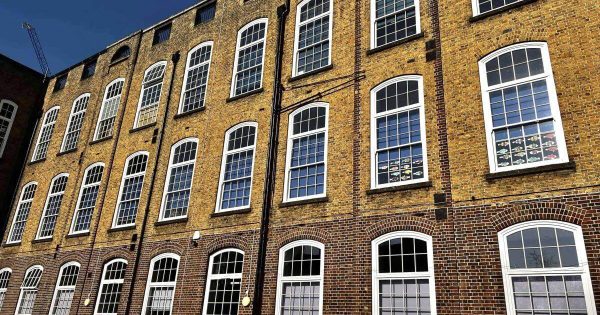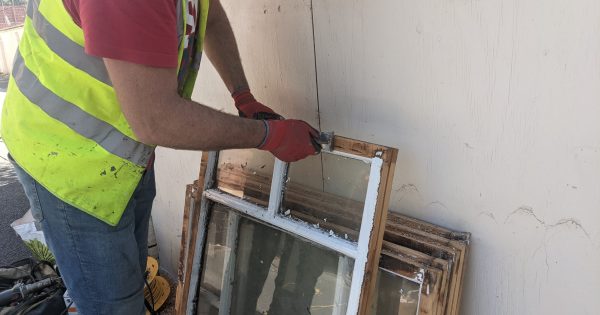Mon Jul 14
For many heritage property owners, external noise is a persistent issue – particularly in urban environments or near a busy road. Yet for listed buildings, upgrading window performance without compromising historic fabric presents a unique challenge.
At TRC Contracts, we’re often asked whether it’s possible to improve the sound insulation of timber sash windows or casement windows in listed properties. The short answer is yes – when approached with care, it is possible to significantly reduce noise intrusion while respecting the building’s character and statutory obligations.
Why listed buildings face unique sound insulation challenges
Traditional windows, especially single glazing found in original Edwardian sash windows or Georgian timber windows, offer limited resistance to sound waves. Thin panes of glass, small air gaps and worn window frame seals mean outside noise easily enters interior spaces.
This has direct implications for:
- Quality of life and home comfort in high-traffic areas
- Residential conversions of listed buildings
- Hospitality and commercial use in central locations
- Compliance with Part E of the Building Regulations (in some refurbishment contexts)
When these windows are left unrestored or poorly maintained, air leakage increases, reducing both acoustic insulation and thermal efficiency. The result is not just higher noise levels but greater energy loss.
Acoustic sash windows: What are the options?
There is no one-size-fits-all solution for soundproof sash windows. However, TRC Contracts offers several well-established methods for reducing the amount of noise transmitted through heritage windows.
Secondary glazing
This remains the most effective and conservation-compliant noise reduction method for listed buildings. By adding a discreet internal glazed unit, TRC Contracts can introduce a second air barrier behind the original window.
Benefits include:
- Up to 70% noise insulation improvement
- Preservation of existing wooden windows and profiles
- Improved thermal insulation
- Minimal impact on external appearance
Our secondary glazing systems are custom-built to fit sash or casement windows, allowing for smooth operation and easy cleaning. Installed correctly, they reduce sound waves transmission without affecting heritage value.
Acoustic glass
Where planning allows, we offer acoustic laminated glass options as part of a complete window restoration or discreet glass replacement. Unlike standard laminated glass, acoustic glazing features a specialist interlayer that dampens vibrations and reduces noise pollution across a range of frequencies.
- Suitable for timber sash windows, casement windows and bespoke joinery
- Can be used as part of a double-glazed or secondary-glazed system
- Helps reduce both low-frequency (traffic) and high-frequency (voices) external noise
Acoustic glass is particularly effective when combined with other measures such as draught-proofing and frame upgrades.
Specialist seals and refurbishment
During a full sash windows restoration, TRC Contracts installs acoustic brush seals and improves joinery tolerances to reduce air leakage, rattling and vibration. While this won’t match the performance of acoustic glazing, it significantly improves noise levels and energy retention in historic properties.
This method works especially well when part of a larger conservation or upgrade scheme, for example in housing association retrofits or heritage-led developments.
How much sound can acoustic sash windows reduce?
With the right specification, you can achieve up to 45 dB of noise reduction. This is enough to cut out the majority of road traffic, conversations and ambient urban noise in most locations.
For comparison:
- Single glazing: typically provides around 20 dB reduction
- Double glazing: 25–30 dB
- Acoustic laminated glass: up to 38–40 dB
- Secondary glazing with large air gap: up to 45 dB
The actual performance depends on the type of glass, frame condition and spacing between units. Our team can advise on the best solution based on your project constraints and conservation requirements.
Will improving sound insulation affect the look of my windows?
Preserving heritage appearance is central to every TRC Contracts project. Whether you’re restoring acoustic sash windows in a conservation area or retrofitting former commercial buildings, we retain original sightlines, materials and operation mechanisms wherever possible.
Our glass replacement work replicates existing profiles and finishes. Secondary glazing is discreet and reversible. Refurbished timber sash windows retain historic detail while delivering better energy efficiency and acoustic control.
What is the most effective method for listed building noise insulation?
Secondary glazing combined with acoustic seals offers the most effective and reversible method. This solution maintains the original window and adds significant performance improvements without the need for major structural changes or planning risk. For sensitive sites, it provides complete peace of mind for architects, contractors and owners.
What else can be done to improve acoustic performance?
Beyond window interventions, consider these complementary approaches:
- Use soft furnishings like heavy curtains and rugs to dampen reverberation
- Seal gaps in floor boards, doors and chimneys to stop flanking noise
- Assess the property’s full acoustic envelope during retrofit planning
- Explore triple glazing only where planning allows and visual impact is acceptable
TRC Contracts can support acoustic upgrades as part of a larger refurbishment or targeted intervention. Each project begins with a full assessment of the current windows, acoustic environment and user expectations.
Who is acoustic glazing suitable for?
We regularly recommend acoustic sash windows and acoustic glazing to:
- Residential developers converting listed properties into high-end apartments
- Conservation professionals working on noise-sensitive buildings like hotels, schools and offices
- Housing associations upgrading traditional windows for tenant comfort
- Private homeowners on noisy roads looking for a low maintenance, long-term solution
If you’re unsure which route to take, we can model different options and advise on compliance, performance and aesthetics.
Improving listed windows without compromising heritage
At TRC Contracts, we work exclusively with period and heritage windows. Every recommendation we make is based on detailed site assessment, building regulations, conservation policy and material compatibility.
We supply and install:
- Acoustic laminated glass as part of glass replacement
- Secondary glazing systems tailored to heritage use
- Sash window restoration with integrated acoustic improvements
- Bespoke joinery and timber sash windows for listed property upgrades
Speak to us about acoustic sash windows
If you’re planning a refurbishment and want to reduce external noise in a sensitive setting, TRC Contracts can deliver a tailored acoustic solution. Whether you’re dealing with Edwardian sash windows, period casement windows or custom wooden windows, we’ll help you balance performance with heritage care.
Explore our acoustic glazing and restoration services or contact our team to arrange a site consultation.
Discover more with TRC Contracts
Choosing the right window style for your architectural design
Advancements in window restoration techniques
The benefits of triple-glazed sash windows in historic buildings





